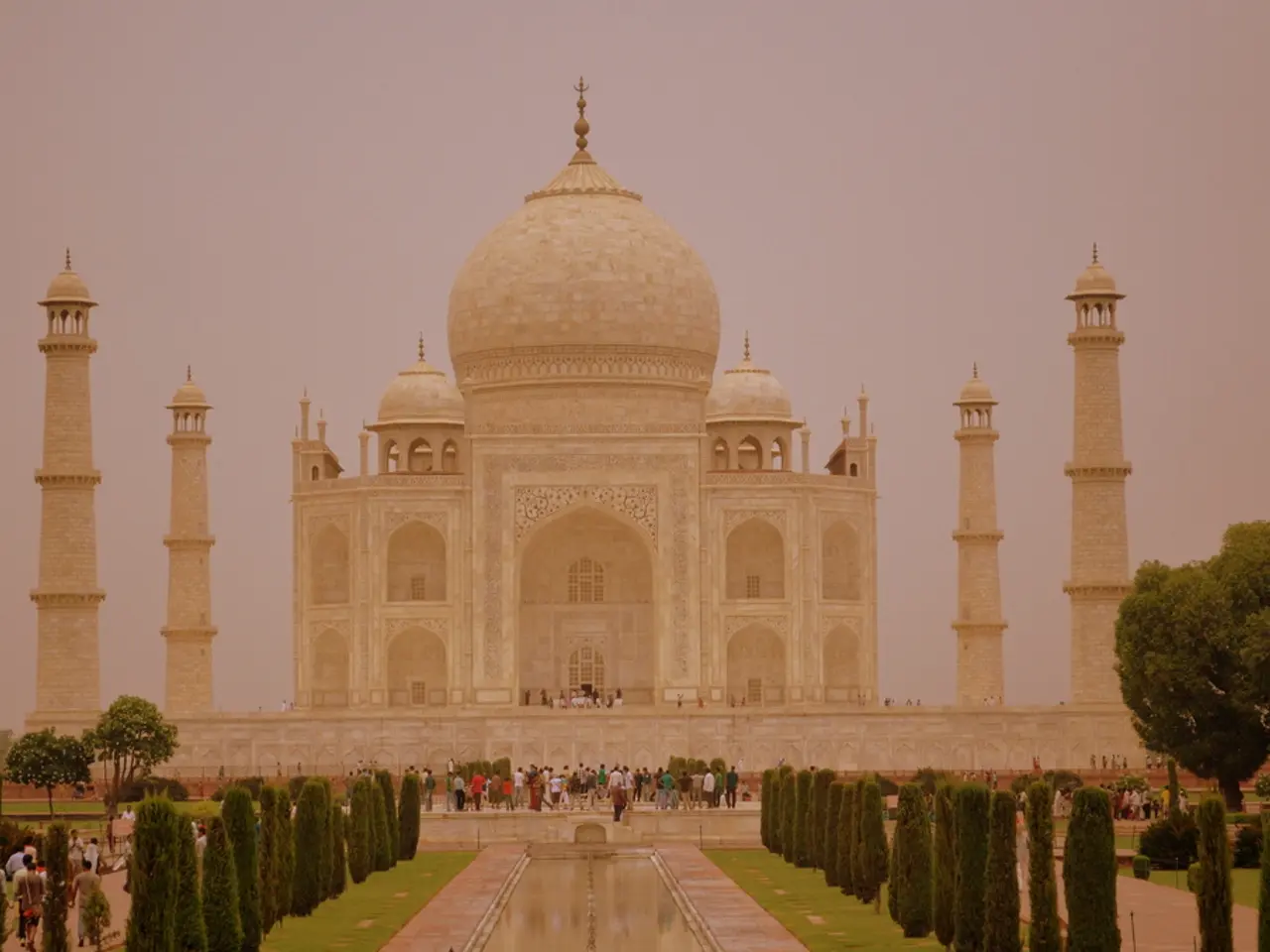Enhanced safeguards implemented following threats from VHP and Bajrang Dal to demolish Aurangzeb's mausoleum
In the historic town of Khuldabad, Maharashtra, known today as Chhatrapati Sambhajinagar district, a centuries-old tomb has become a focal point of controversy and unrest. The tomb, a modest structure reflecting Mughal Emperor Aurangzeb's desire for simplicity in death, has been a flashpoint for conflict due to its proximity to several Sufi shrines [2][3].
Aurangzeb, who ruled from 1658 to 1707, remains a polarizing figure in Indian history due to his strict religious policies and perceived intolerance [2]. The demands to remove his tomb in 2025 have sparked violent clashes and political protests, with right-wing groups such as the Vishva Hindu Parishad (VHP) and Bajrang Dal at the forefront [2][4].
On March 17, VHP leaders plan to submit a memorandum to Chief Minister Devendra Fadnavis, demanding the removal of the tomb [1]. This demand echoes threats from the Bajrang Dal and VHP, which have been compared to the destruction of the Babri Masjid in Ayodhya, Uttar Pradesh, in 1992 [6].
The Maharashtra government has responded by deploying police forces to maintain law and order, urging restraint and peaceful dialogue. The Archaeological Survey of India (ASI) has installed guardrails around the tomb to protect it amid ongoing unrest [5].
Opposition leaders, including Leader of Opposition in Maharashtra Vidhan Parishad Ambadas Danve of Shiv Sena (UBT), have criticised the demand to destroy the tomb. Danve argues that Aurangzeb's grave being in the area is proof that he came there and was defeated and killed [7].
The controversy reflects broader political and communal dynamics in India, where historical legacies influence present-day identity politics and social tensions. Some argue that the tomb is not a symbol of bravery but of cruelty, while others see it as a testament to the resilience of Chhatrapati Shivaji Maharaj [8].
Meanwhile, the Finance Minister is expected to place a new I-T Bill in the Lok Sabha on Monday, while Chief Minister Devendra Fadnavis has supported the demand, but emphasised that any action must adhere to the legal framework, as the site is protected by the ASI [9].
References:
- The Indian Express
- The Hindu
- The Times of India
- NDTV
- The Wire
- The Print
- The Hindu
- The Indian Express
- The Hindu
The controversy surrounding the centuries-old tomb in Chhatrapati Sambhajinagar district, once a focal point of war-and-conflicts, is now causing unrest within policy-and-legislation and politics. Right-wing groups, such as the Vishva Hindu Parishad (VHP) and Bajrang Dal, have been pushing for its removal, a demand compared to the destruction of the Babri Masjid in Ayodhya, creating a divide in the general-news landscape. Meanwhile, crime-and-justice concerns arise due to the violent clashes and protests surrounding the issue.








